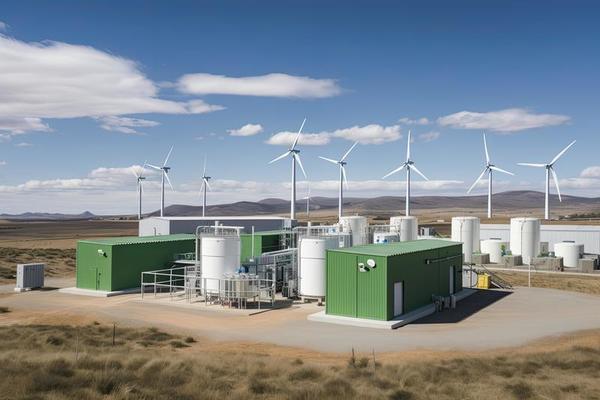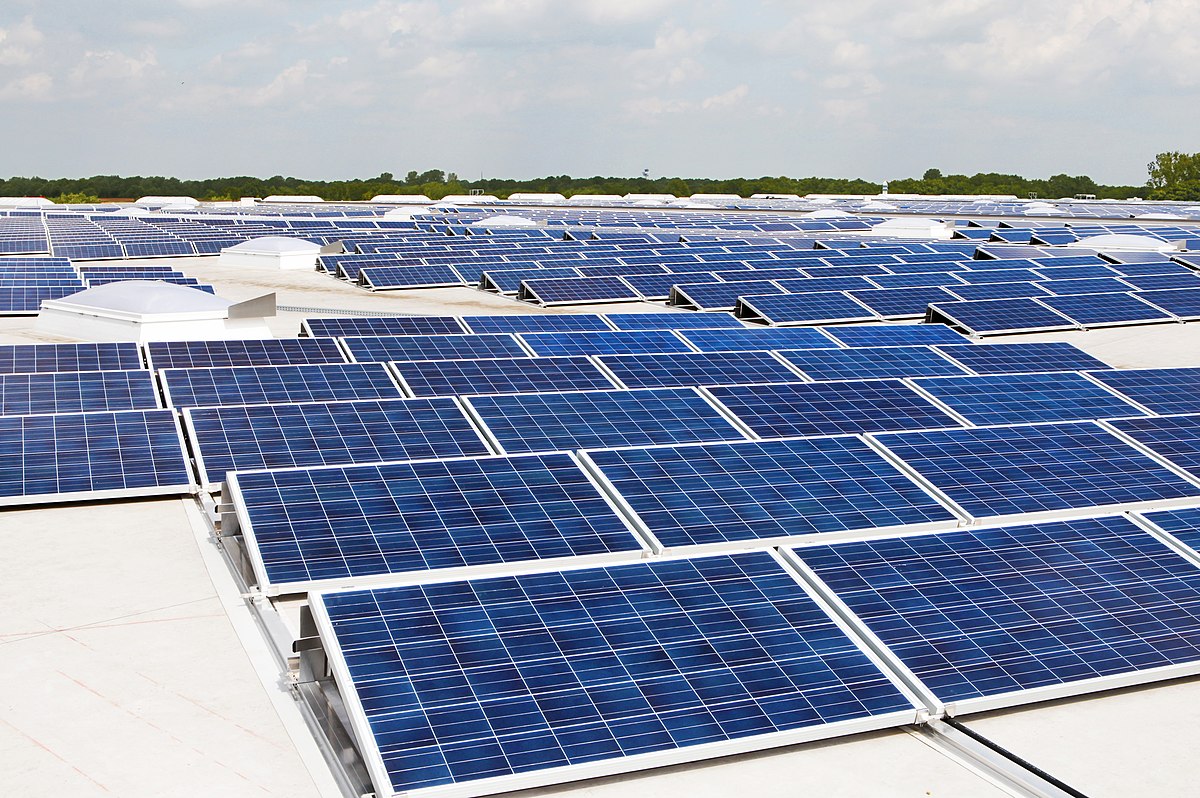Climate Change: Mitigation through Ecosystem Restoration and 6 Investment Opportunities
Introduction:
Climate change poses a significant threat to the health of our planet, impacting ecosystems, weather patterns, and biodiversity.

As we celebrate the one-year anniversary of our ongoing commitment to combating climate change, it is crucial to explore innovative and sustainable solutions.
Ecosystem restoration emerges as a powerful strategy to mitigate the effects of climate change while simultaneously fostering biodiversity and enhancing the overall resilience of our planet.
The Importance of Ecosystems:
Ecosystems, ranging from forests and wetlands to grasslands and coral reefs, play a pivotal role in regulating the Earth’s climate.
They act as carbon sinks, absorbing and storing large quantities of carbon dioxide (CO2) from the atmosphere.
However, widespread deforestation, habitat degradation, and other human activities have disrupted these vital ecosystems.
Releasing stored carbon and contributing to the greenhouse gas effect.
Mitigating Climate Change through Restoration:
Ecosystem restoration involves the rehabilitation of degraded ecosystems and the reintroduction of native plant and animal species. This process not only helps sequester carbon but also enhances biodiversity, improves water quality, and supports local communities.
- Reforestation:https://www.britannica.com/science/reforestation
- Planting trees on deforested or degraded lands is a key component of ecosystem restoration. Trees absorb CO2 during photosynthesis and release oxygen, helping to offset the impacts of human activities that contribute to climate change.
- Reforestation projects can be tailored to local ecosystems, promoting the growth of native species and creating resilient landscapes capable of withstanding the challenges posed by a changing climate.
- Wetland Restoration:
- Wetlands are highly effective carbon sinks and provide numerous ecosystem services, including water purification and flood control. Restoring degraded wetlands helps sequester carbon, preserve biodiversity, and maintain water balance.
- Community involvement in wetland restoration projects fosters a sense of stewardship, ensuring the long-term success and sustainability of these initiatives.
- Grassland and Coral Reef Restoration:
- Grasslands and coral reefs, although distinct ecosystems, face similar challenges due to climate change and human activities. Implementing restoration projects in these areas helps rebuild habitats, protect vulnerable species, and enhance ecosystem resilience.
- Community-based approaches, combining traditional knowledge with modern restoration techniques, can maximize the impact of grassland and coral reef restoration efforts.
- Policy and International Collaboration:
- Governments, non-governmental organizations, and international bodies play a crucial role in supporting ecosystem restoration through policy development and implementation.
- Collaboration at the global level is essential, as climate change is a transboundary issue. Sharing best practices, technologies, and resources can amplify the impact of restoration initiatives and promote a unified front against climate change.
As we reflect on the progress made in the past year in addressing climate change, ecosystem restoration stands out as a tangible and sustainable solution.
By investing in the restoration of diverse ecosystems, we not only mitigate the impacts of climate change but also create healthier environments for both nature and humanity.
The coming years must witness a collective effort to scale up these initiatives, fostering a harmonious relationship between humans and the natural world for the benefit of generations to come.
Unraveling the Causes of Climate Change
Climate change, a defining challenge of our time, is a complex and multifaceted phenomenon with far-reaching consequences for the planet and its inhabitants.
Understanding the causes of climate change is paramount to developing effective strategies for mitigation and adaptation.
This article delves into the primary contributors to climate change, ranging from human activities to natural processes.

- Greenhouse Gas Emissions:
- Burning of Fossil Fuels: The combustion of fossil fuels, such as coal, oil, and natural gas for energy, is a major source of greenhouse gas emissions. Carbon dioxide (CO2) released during this process accumulates in the atmosphere, contributing to the greenhouse effect and trapping heat.
- Deforestation: The clearing of forests for agriculture, logging, and urban development reduces the number of trees that absorb CO2. This leads to an imbalance, as fewer trees are available to sequester carbon dioxide, contributing to increased atmospheric concentrations.
- Industrial Processes: Certain industrial activities release potent greenhouse gases, including methane (CH4) and nitrous oxide (N2O). Agricultural practices, such as rice cultivation and livestock digestion, also produce significant amounts of methane.
- Land Use Changes:
- Deforestation and Land Degradation: Beyond impacting carbon sequestration, deforestation alters land surfaces, affecting local and regional climates. Changes in land use, such as urbanization and agriculture expansion, contribute to temperature variations and weather pattern disruptions.
- Urban Heat Islands: The development of urban areas with extensive impervious surfaces, such as asphalt and concrete, leads to localized warming known as urban heat islands. This phenomenon intensifies heat and alters weather patterns, contributing to climate change at the local level.
- Natural Factors:
- Solar Radiation Variability: Changes in solar radiation, including sunspot cycles and variations in the Earth’s orbit, can influence climate. However, current climate change trends cannot be solely attributed to natural factors, as the observed warming exceeds what can be explained by natural variability alone.
- Volcanic Activity: Volcanic eruptions release large amounts of ash and gases, including sulfur dioxide, into the atmosphere. While these events can have a temporary cooling effect, their contribution to long-term climate change is limited.
- Waste Management and Landfills:
- Methane from Landfills: Improper waste management practices, particularly the disposal of organic waste in landfills, results in the anaerobic decomposition of organic matter, producing methane. Landfills thus become sources of greenhouse gas emissions.

Climate change is a result of a complex interplay of human activities and natural processes.
While natural factors have historically influenced the Earth’s climate, the accelerated pace of climate change observed in recent decades is predominantly linked to anthropogenic activities.
Recognizing and addressing the causes of climate change is a collective responsibility, necessitating global cooperation to implement sustainable practices, reduce emissions, and foster resilience in the face of a changing climate.
Seizing Opportunities: Investing in the Fight Against Climate Change
As the urgency to address climate change intensifies, the business landscape is witnessing a transformative shift towards sustainability and eco-friendly practices.
Investing in initiatives that combat climate change not only aligns with environmental stewardship but also presents lucrative opportunities for forward-thinking investors.
This article explores key investment opportunities in the burgeoning field of climate change mitigation and adaptation.

- Renewable Energy Sector:
- Solar and Wind Energy: Investing in solar and wind energy projects has become increasingly attractive. Advances in technology have significantly reduced the costs associated with harnessing these renewable sources, making them competitive with traditional fossil fuels.
- Energy Storage Solutions: As the demand for renewable energy grows, so does the need for efficient energy storage. Investing in companies developing cutting-edge battery technologies and energy storage solutions can be a profitable venture.
- Green Infrastructure and Sustainable Development:
- Smart Cities: The development of smart, sustainable cities presents a vast investment opportunity. Projects focusing on energy-efficient buildings, intelligent transportation systems, and innovative waste management can contribute to both environmental and economic sustainability.
- Green Building Technologies: Investments in companies that specialize in eco-friendly building materials, energy-efficient designs, and sustainable construction practices are poised for growth as the construction industry embraces green building standards.
- Carbon Capture and Storage (CCS):
- Carbon Capture Technologies: Companies involved in developing and implementing carbon capture technologies are crucial in the fight against climate change. These technologies aim to capture and store carbon emissions from industrial processes, preventing them from entering the atmosphere.
- Agroecology and Sustainable Agriculture:rong>
- Precision Agriculture: Investing in technologies that enhance precision agriculture practices can lead to more efficient and sustainable food production. These technologies include sensors, drones, and data analytics to optimize crop yields while minimizing environmental impact.
- Agroforestry and Soil Carbon Sequestration: Projects focused on agroforestry, which integrates trees into agricultural landscapes, and soil carbon sequestration can enhance carbon storage, improve soil health, and promote sustainable farming practices.
- Water Management and Conservation:
- Water Infrastructure: Investments in water infrastructure projects, such as efficient irrigation systems, water recycling technologies, and desalination, address the growing challenges of water scarcity and ensure sustainable water management.
- Wastewater Treatment: Companies involved in advanced wastewater treatment technologies contribute to environmental conservation while creating value through the recovery of resources from wastewater.
- Green Finance and Sustainable Investments:
- Green Bonds and ESG Funds: The rise of green bonds and Environmental, Social, and Governance (ESG) funds allows investors to support environmentally responsible projects. These financial instruments promote sustainable practices across various sectors, from energy to manufacturing.

Investing in the fight against climate change is not just an ethical choice; it’s a strategic move in a world that is increasingly prioritizing sustainability.
The opportunities outlined here showcase the potential for profitable investments that align with the global imperative to build a more resilient and environmentally conscious future.
As financial markets evolve, those who embrace climate-conscious investments stand to make a positive impact on the planet while realizing substantial returns on their investments.
Navigating the Green Wave: A Guide for Potential Investors in Climate Change Solutions
Embarking on an investment journey aimed at combating climate change requires a strategic approach and a nuanced understanding of the evolving landscape.
As opportunities in sustainable and eco-friendly initiatives continue to expand, prospective investors can play a pivotal role in driving positive environmental impact while realizing financial returns.
Here’s a guide on how potential investors can navigate and capitalize on these investment opportunities.

- Educate Yourself on Sustainable Investing:
- Understand ESG Criteria: Environmental, Social, and Governance (ESG) criteria have become integral to evaluating the sustainability performance of companies. Familiarize yourself with these criteria to identify investments aligned with environmentally responsible practices.
- Stay Informed: Keep abreast of global trends, policy developments, and advancements in green technologies. Engage with reputable sources, attend conferences, and consider joining sustainable investment networks to stay well-informed.
- Identify High-Potential Sectors and Companies:
- Assess Renewable Energy Projects: Evaluate opportunities in the renewable energy sector, such as solar and wind energy projects, energy storage solutions, and innovative technologies that enhance energy efficiency.
- Explore Sustainable Agriculture and AgTech: Look for investment opportunities in sustainable agriculture, agroecology, and AgTech. Companies focusing on precision agriculture, agroforestry, and soil carbon sequestration present promising prospects.
- Diversify Your Portfolio:
- Consider Different Sectors: Diversification is key to managing risk. Explore investments across various sectors related to climate change solutions, including green infrastructure, carbon capture and storage, water management, and sustainable transportation.
- Evaluate the Financial Viability:
- Financial Performance: While aligning with sustainable goals is crucial, evaluate the financial health and performance of potential investments. Look for companies with a strong track record of financial stability and growth.
- Long-Term Prospects: Climate change solutions often involve long-term commitments. Assess the long-term prospects and scalability of investments, considering factors like regulatory support and market demand.
- Understand Risks and Mitigation Strategies:
- Climate-Related Risks: Acknowledge and assess climate-related risks that may impact investments, such as physical risks (extreme weather events) and transition risks (policy and market shifts). Seek investments with clear mitigation strategies in place.
- Engagement and Advocacy: Consider investments in companies that actively engage in climate action and sustainable practices. Companies with strong sustainability governance structures are often better equipped to navigate climate-related challenges.
- Explore Green Finance Instruments:
- Green Bonds and Funds: Explore green bonds and funds that specifically focus on environmentally responsible projects. These financial instruments are designed to channel funds into sustainable initiatives, offering investors exposure to a diversified portfolio of green assets.
- Consult with Financial Advisors:
- Specialized Guidance: Seek advice from financial advisors with expertise in sustainable and impact investing. They can help tailor your investment strategy to align with your financial goals while making a positive contribution to climate change mitigation.

Conclusion:
Investing in climate change solutions represents not just a financial opportunity but a chance to contribute to a more sustainable future.
By combining a robust understanding of sustainable investing principles with a proactive approach to identifying high-potential opportunities.
Investors can play a pivotal role in advancing environmental goals while reaping the rewards of a rapidly evolving green economy.
In conclusion, the imperative to address climate change is not just a clarion call for environmental stewardship;
It is a resounding opportunity for visionary investors to shape a future where economic prosperity harmonizes with ecological sustainability.
The investment landscape, once dominated by traditional paradigms, is now undergoing a profound transformation catalyzed by the urgent need to combat climate change.
As we celebrate the one-year milestone of collective efforts to tackle this global challenge, it is abundantly clear that the investment opportunities in climate change solutions are not merely financial instruments;
They are the building blocks of a sustainable and resilient world.
The potential for impactful investment spans across diverse sectors, from renewable energy and green infrastructure to agroecology, carbon capture, and sustainable finance instruments.
In navigating this green wave, investors are not just seeking profitable returns; they are becoming architects of a new era, where the pursuit of financial prosperity converges seamlessly with the commitment to environmental and social well-being.
The power of capital, when wielded responsibly, becomes a force for positive change—a catalyst for innovation, a driver of sustainable development, and a beacon of hope for future generations.
It is essential for potential investors to arm themselves with knowledge, recognizing that sustainable investing is not a mere trend but a fundamental shift in the trajectory of global economies.
Embracing ESG criteria, staying informed about technological advancements and policy shifts.
And diversifying portfolios across climate-resilient sectors are the foundational steps toward responsible and impactful investment strategies.
As the financial landscape evolves, investors must look beyond short-term gains and consider the long-term implications of their choices.
Climate change solutions often require patience, commitment, and a forward-thinking perspective that extends beyond quarterly reports.
Evaluating the financial viability of investments should go hand-in-hand with an understanding of the broader socio-environmental landscape.
Acknowledging that the true measure of success lies not just in monetary returns but in the positive contributions made toward mitigating climate change.
Furthermore, the identification and assessment of risks associated with climate change cannot be understated.
Investors must be vigilant in recognizing both the immediate and long-term risks, ranging from physical impacts to regulatory shifts.
Yet, with risk comes opportunity, and those who strategically navigate these challenges can position themselves at the forefront of transformative change.
Consulting with financial advisors who specialize in sustainable and impact investing becomes paramount in this journey.
These experts can provide tailored guidance, helping investors align their financial goals with their ethical and environmental aspirations.
Collaboration and knowledge-sharing within the investment community can further amplify the impact of these efforts.
Fostering a culture where responsible investing becomes the norm rather than the exception.
In this conclusion, we stand at the intersection of financial acumen and ecological responsibility, where the choices made today will echo through the corridors of time.
The one-year anniversary of our commitment to addressing climate change is not just a reflection of past achievements but a call to action for the years that lie ahead.
Let us seize the unparalleled opportunities that sustainable investing presents, not merely as a means to accrue wealth.
But as a profound statement of our shared commitment to building a future where economic prosperity is intricately interwoven with environmental vitality.
As investors, we have the power to shape destinies, influence industries, and redefine the very essence of success.
The question that resonates now is not just how we invest; it is about what legacy we choose to leave for the generations that will inherit the consequences of our choices.
The time to act is now, and the power to transform our world lies within the portfolios we construct, the companies we support, and the vision we collectively share for a sustainable and thriving future.





Leave a Reply